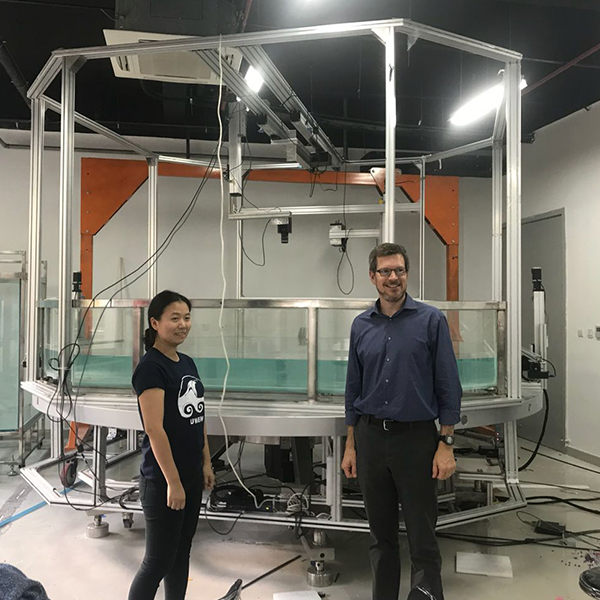When deciding on the appropriate number of axes for your CNC machine, several factors must be considered to match the machine’s capabilities with your manufacturing requirements:
1. Complexity of Parts: Evaluate the geometric complexity of the parts you need to manufacture. Simple parts with 2D profiles may only require a 3-axis machine, whereas intricate components with multi-faceted shapes, undercuts, or complex contours typically necessitate a 5-axis machine.
2. Production Volume and Efficiency: Higher axis machines, such as 4-axis and 5-axis, increase machining efficiency by reducing the need for multiple setups and repositioning. This is particularly beneficial for high-volume production runs where time savings and reduced human intervention can significantly enhance throughput.
3. Material Characteristics: Consider the material properties you will be working with. Harder materials might demand advanced machining strategies available in multi-axis machines to achieve precise finishes and extended tool life.
4. Budget and ROI: The initial investment and maintenance costs of higher axis CNC machines are substantially more. Conduct a cost-benefit analysis to ensure that the increased capabilities of a multi-axis machine will offer a satisfactory return on investment (ROI) given your production needs.
5. Future Needs: Assess potential future requirements for your machining capabilities. Investing in a more advanced CNC machine now might be cost-effective in the long run as it could accommodate future, more complex projects without the need for additional equipment.
Making an informed decision involves balancing these considerations with your specific operational goals and constraints.
Comparing 3-Axis, 4-Axis, and 5-Axis Machines
When comparing 3-Axis, 4-Axis, and 5-Axis CNC machines, it is essential to consider each machine’s capabilities, efficiency, and technical parameters to determine the best fit for your production needs. Below are the concise answers to the above questions, including relevant technical parameters:
3-Axis CNC Machines
Capabilities: Suitable for simpler geometric shapes and 2D profile components. Limited to machining on three linear axes (X, Y, Z).
Efficiency: Requires multiple setups for complex parts, leading to increased setup time and lower production efficiency.
Material Characteristics: Can handle a wide range of materials but might struggle with very hard materials requiring intricate cuts.
Technical Parameters:
- Linear Travel: X, Y, Z axes.
- Accuracy: Generally up to ±0.01 mm depending on the machine.
4-Axis CNC Machines
Capabilities: Adds rotational movement around one axis (A-axis) to the three linear axes, allowing for the machining of more complex shapes and continuous cutting.
Efficiency: Offers improved efficiency by reducing the necessary setups for parts requiring rotation, thus minimizing downtime.
Material Characteristics: Better suited for materials that need precision cutting and rotational machining.
Technical Parameters:
- Linear Travel: X, Y, Z axes.
- Rotational Travel: A-axis.
- Accuracy: Typically around ±0.01 mm.
5-Axis CNC Machines
Capabilities: Provides rotation around two additional axes (A and B), enabling the creation of highly complex, multi-faceted parts with undercuts and intricate contours. Capable of simultaneous five-axis machining.
Efficiency: Significantly enhances production efficiency by reducing the need for part repositioning, resulting in shorter lead times and higher throughput.
Material Characteristics: Ideal for high-precision parts made from tougher materials, allowing for intricate machining strategies and extending tool life.
Technical Parameters:
- Linear Travel: X, Y, Z axes.
- Rotational Travel: A-axis and B-axis.
- Accuracy: Precision up to ±0.005 mm.
By thoroughly evaluating these technical aspects and aligning them with your operational goals, you can make informed, strategic decisions regarding the selection of a CNC machine that best suits your production requirements.
Factors Influencing the Number of Axes Needed
In determining the number of axes required for a CNC machine, several critical factors must be taken into consideration. Firstly, the complexity of the part geometry plays a pivotal role. Simple parts with straightforward shapes may only necessitate a 3-axis machine, whereas more intricate designs with undercuts and multi-faceted contours will benefit from the additional rotational axes of a 4-axis or 5-axis machine.
Secondly, the production volume is essential; higher volumes often justify the investment in multi-axis machines due to their capabilities in reducing setups and minimizing downtime, thus enhancing overall efficiency. For high-precision parts made from tougher materials, the superior accuracy and tool life of 5-axis machines can be crucial in meeting stringent quality standards.
Lastly, the specific industry requirements can dictate the necessity for additional axes. Aerospace, medical, and automotive sectors often demand high levels of precision and complexity, making 5-axis machines more suitable. By evaluating these factors in the context of your specific operational goals, you can make an informed decision on the optimal number of axes needed for your CNC machinery.
When to Consider a 7-Axis CNC Machine
A 7-axis CNC machine should be considered when there is a need for executing highly complex and intricate machining tasks that require multiple degrees of freedom. These machines are particularly vital in producing parts with complex geometries and tight tolerances, often found in aerospace, medical, and advanced automotive applications. Additionally, 7-axis machines excel in reducing the number of setups required, enhancing production efficiency, and minimizing human intervention which reduces the potential for errors. They also allow for full three-dimensional contouring, making them suitable for advanced mold making and intricate component fabrication. The investment in a 7-axis CNC machine is justified when the increased capabilities translate into significant operational efficiencies and superior product quality.
Post time: May-07-2025









